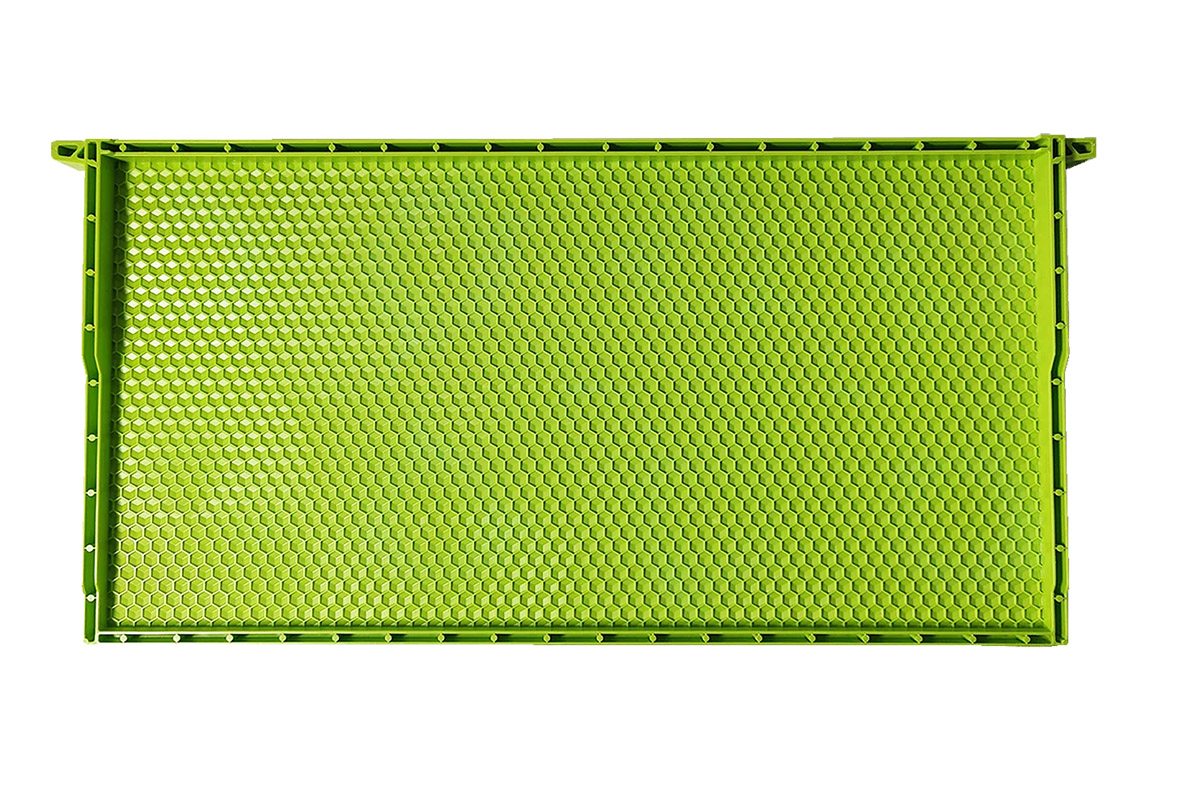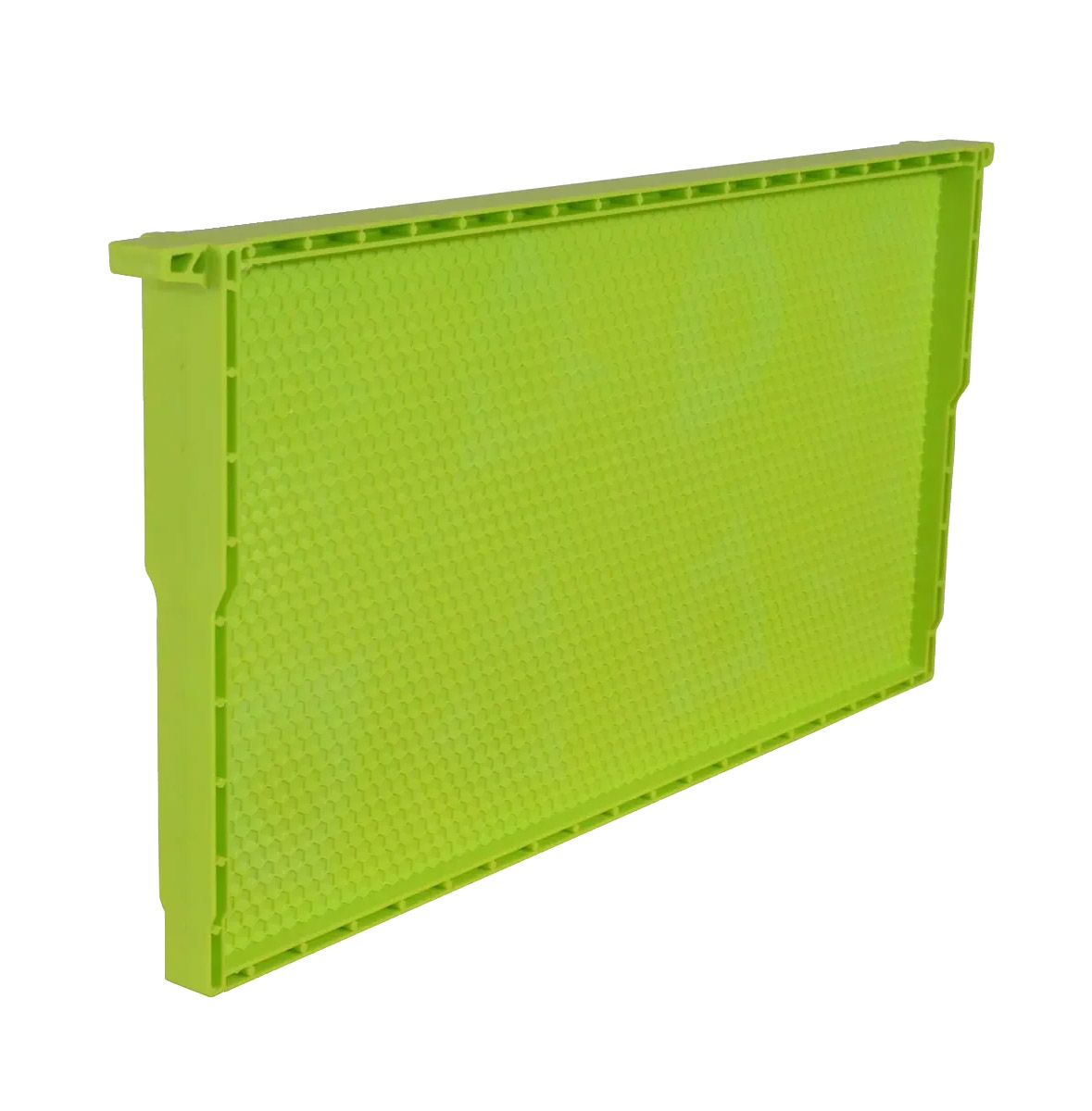Tel: 02 9731 7400 | Unit 1A, 1 Swaffham Road, Minto NSW 2566
Store Categories
- Waxed
- Cell sizing (7.1mm compared to 5.4mm) encouraging drone comb
- One-piece plastic frame and foundation
* Please be aware that products containing wax are unable to be shipped to Western Australia due to state biosecurity requirements.
How Drone Frames Work Against Varroa Mite:
Drone frames serve as an effective tool in beekeeping management to combat Varroa mite infestations, which pose a significant threat to bee colonies. Varroa mites, parasitic pests, have a strong preference for drone brood due to its longer developmental period, making it an ideal environment for their reproduction. By strategically utilizing drone frames, beekeepers aim to disrupt this reproductive cycle and mitigate the impact of Varroa mites on colony health.
These frames are specifically designed to contain only drone-sized cells, larger than those of worker bees. By providing a dedicated space for drone brood, beekeepers attract Varroa mites away from worker brood, effectively luring them into a trap. Once the drone brood is capped and before the adult drones emerge, beekeepers remove these frames from the hive, along with the Varroa mites they harbor.
This targeted removal of drone brood serves multiple purposes. Firstly, it disrupts the Varroa mite's reproductive cycle by removing the preferred environment for their reproduction. Secondly, it reduces the overall Varroa mite population within the colony, thereby alleviating the pressure they exert on bee health. Additionally, by inspecting the removed drone brood, beekeepers can monitor Varroa mite levels within the hive, allowing for timely intervention when necessary.
In essence, drone frames play a crucial role in integrated pest management strategies for Varroa mite control. By effectively managing Varroa mite infestations, beekeepers can help maintain the health and productivity of bee colonies, ensuring the sustainability of beekeeping operations.











